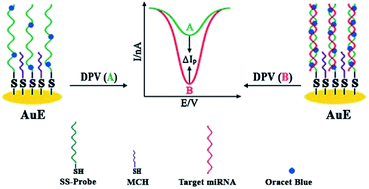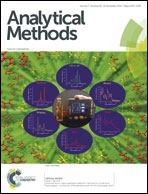Application of Oracet Blue in a novel and sensitive electrochemical biosensor for the detection of microRNA
Abstract
MicroRNAs in serum/plasma have been introduced as novel, reliable and specific biomarkers for the detection, status monitoring and population screening of a disease. Along with molecular biology techniques, electrochemical biosensors have become the major biosensing method for miRNA quantification. Here we have tried to develop an electrochemical biosensing system which is simple, easy to prepare, highly sensitive and selective, cost-effective and has no need for sample preparation and/or amplification. We have evaluated an anthraquinone compound, Oracet Blue (OB), as an intercalative electroactive label for miRNA electrochemical biosensing. The proposed electrochemical biosensor was made of a thiolated single strand capture probe (SH-modified SS-probe) on an Au electrode (AuE). The role of OB was electrochemical signal transduction upon hybridization of the SS-probe to the target miRNA. Under optimized conditions, target miRNAs can be detected from 50 pM to 15 nM with a detection limit of 13.5 pM. The biosensor clearly discriminated the target miRNA from a single base mismatch and non-complementary target oligonucleotides, which could guarantee a high selectivity and specificity. Moreover, the results of the real sample assay of the proposed biosensor in human serum showed a good recovery percentage as well as high reproducibility which is promising for its future potential use in clinical applications.


 Please wait while we load your content...
Please wait while we load your content...